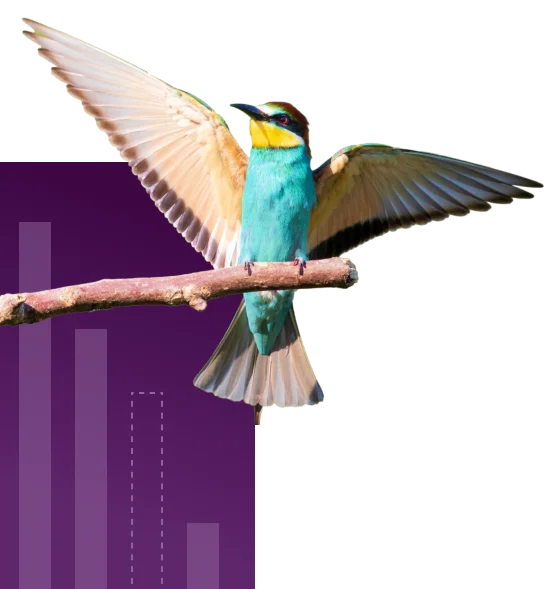Understanding Types of Customer Loyalty Programs for Your Brand
Table of Contents
It is often said that repeat customers are more profitable for your brand as around 65% of a brand’s revenue comes from their repeat customers as per a report by queue.it.
So this means that retention of a customer is an extremely important part that a brand should focus on. And how does a brand successfully retain their existing customers?
The answer is easy, just consider opting for a customer loyalty program.
Well the customer loyalty programs are smart marketing strategies that are especially curated by brand advertisers for strengthening the brand-customer relationships.
These loyalty programs work on the simple premise that the brands offer their customers some lucrative incentives, offers and discounts in return for their customer’s repurchase from the same brand.
Ultimately the brand and the customers are tied together in the loop of repeated purchases and interactions. But are the customer loyalty programs beneficial for the brands? Let’s find out.
What Do The Customer Loyalty Programs Bring to the Brand’s Table?


The customer loyalty programs not only benefit the customer’s with some tangible assets and offers but certainly they also bring a great deal from the brand’s perspective as these programs helps the brands in these certain ways;
- Improved Customer Retention: The customer loyalty programs are often credited for improving a brand’s customer retention rate. Plus as per a study by the Harvard Business School it is believed that even a slightest 5% hike in the customer retention rate can hike up a business’s profit margins by 25%-95%.
- Better Brand Recognition & Customer Insights: With the commencement of a brand’s loyalty program its recognition and popularity are bound to have a great leap amongst the audiences in general.
Along with better brand recognition the loyalty programs also assist in giving better customer insights to the brand. And brand loyalty is only a successful marketing plan if it resonates well with the customer. - More traffic, More Customers: As the brand loyalty programs offer vivid and attractive offers and discounts the brand’s can also expect to have good traffic channelised towards their routes. And eventually more traffic means more potential customers.
What criteria should brand’s consider before choosing the right program?
There are a plethora of different types of loyalty programs for brand’s marketing programs however, a brand’s loyalty program should be finalized and based out of the following criteria for making the right decision;
- Intent: The brand should have a clear intent when they sit down to finalize the type of loyalty program they would like to opt for. Their intentions behind launching a loyalty program may range from increasing their customer base to collection of data but with every possible manner they have to align with their goals.
- Competition: The retail space is a crowded place, hence the brands ought to have competition in their respective field. So to stay ahead of the competitive curve brands should keep a close eye on their competitors and offered loyalty programs so that they don’t come out as identical or similar to their competitors in the eyes of the audiences.
- Niche: The brand should be fully aware of their niche and target audiences whom they are trying to cater eventually. Along with having the knowledge and awareness of all things and gestures motivates their customers to buy can be helpful in devising the most effective and successful marketing plan.
Now let us shed more light on what are the different types of loyalty programs that the brands can consider.
The Different Types of Customer Loyalty Programs handpicked for your brands.


Tier based loyalty programs:
The tier based loyalty programs are those programs that enable the users to upgrade their tiers with some purchases they make from that particular brand.
Usually these programs have three tiers and their associated perks offered to their customers. For instance, Nestlé runs a loyalty program that is three tiered and the members of the loyalty program get assigned any of the tiers as per their spends with the company.
These tiers have specified rewards associated with them that keeps their existing customers hooked to the brand.
Points-based loyalty programs:
Next category of the loyalty programs is points-based loyalty programs. In these programs the customers get to collect some points after each purchase and once a significant number of points are accumulated they can redeem those points for enjoying some rewards and perks.
To explain the concept of points-based loyalty programs let us take an example of some hotel chain. If a customer chooses to stay loyal with the hotel chain each time they travel then with each stay they can get some points which can be redeemed next time they plan a stay at that hotel chain.
They can get additional discounts, room upgrades, and other benefits by collecting points and redeeming them. This type of loyalty program is opted by the famous hotel chain Marriott International,Inc.
Fee-based loyalty programs:
Then there are the fee-based or subscription based loyalty programs. These programs basically work on the mechanism of paying a fee for getting additional discounts and special offers.
This model is adopted by Amazon with their Prime membership programs, which offers one day delivery and extra discounts for the members of the program.
Gamified loyalty programs:
The easiest way to attract and retain the attention of your customers is through introducing intincing and exciting gamified loyalty programs. This kind of program keeps the customers engaged and entertained for a long period of time. Thus, Starbucks the renowned coffee chain also considers using a gamified loyalty program to engage their customers worldwide.
Value- propagating loyalty programs:
Last but not least, there are value propagating loyalty programs. These programs ensure to connect with the brand’s customers by resonating a similar set of values that is synonymous with the brand’s perspective and ideology.
These initiatives make brands shine in a very positive light in front of their customers. One such value propagating loyalty program is launched by Ben & Jerry’s which partners with the local dairies and works for their welfare and development under the name “Caring Dairy” partnerships.
What if you have chosen the most suitable loyalty program and have no clue how to get it implemented? This is where Salesforce Loyalty Management comes into the bigger picture.
It is an incredible and potent one stop solution for creating and managing the customer loyalty programs for your organization.
→ Click here to download our free guide to Salesforce Loyalty Management Implementation [Download Now].
Salesforce Loyalty Management in the bigger picture:
Let us highlight some of the startling insights about Salesforce Loyalty Management and see what all does it have to offer;
- Customer 360 Insights: The companies get a full 360° view and update regarding their customers and their actions with Salesforce Loyalty management. Plus tracking the redemption cycle of the points and referrals also becomes easy.
- Alterable Program Configuration: With Loyalty Management the brands can customize and alter their customer loyalty programs as per their needs, requirements and industry types without any hassle.
- Tableau Analytics: Infusion of advanced technologies and AI powered assistance of the Tableau analytics with the Salesforce Loyalty Management makes forecasting and data driven decision making convenient like never before.
- Swift Integration Capabilities: Sometimes the brand’s might also want to incorporate the capabilities of other softwares as well so the Loyalty Management allows swift and seamless integration with just a few licenses with other softwares allowing the brand’s to not even lift a finger to get the job done.
- Upcoming Advancements: This is not all, Salesforce Ecosystem ensures that innovation is a constant part of their products and solutions. Thus, there are some simple yet effective upcoming advancements that are awaited by so many companies.
These advancements will be associated with the referrals and their redemption cycles at the brick and mortar stores as well as the e-commerce space. Along with that the fraud detection technology is also shaping up well in the trial phases for a smoother customer experience.


Summing up:
The brands should definitely consider going for loyalty management programs as there are multiple benefits associated with them. These programs not only enhance the loyal customer base of the brand but also help them boost their sales revenues remarkably. To make things easier and comprehensible for the brands we have highlighted some of the best types of loyalty management programs brand’s can choose from.


Don’t Worry, We Got You Covered!
Get The Expert curated eGuide straight to your inbox and get going with the Salesforce Excellence.








